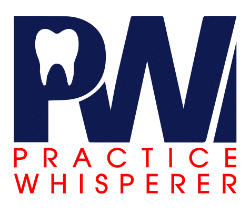Achieving Cost Savings in Your Dental Office
Last year this was one of the most read and re-read article I wrote.
Most of us prefer to spend our limited time each day on clinical dentistry, and as a result may at times allow some business focus to slide. Over time our lack of attention can lead to higher costs than necessary and may even impact our ability to provide for our family. Re-evaluating the business for improvements in efficiency and overhead is an important exercise to conduct at least annually to maintain a healthy business. The changes post Covid have made it even more imperative to assess our business practices and find ways to counter the rising costs of PPE and other overhead expenses.
Here are a few suggestions that can make a huge difference:
1) Instruments – Same manufacturer, pay LESS
The interesting part about an industry as small as dentistry is there are only a handful of manufacturers, but a ton of vendors. With a little bit of research, you can locate the same exact item and pay different prices depending on who you order from.
I met one of the owners of the Berman Instruments company last year who is local to Dallas and have found them great to work with. This company provides instruments made by the same manufacturer as other high-quality, nationally known vendors, but at a fraction of the cost. You buy directly and therefore get double savings.
I have ordered several different items through them and they are all high quality. I wish I had heard about this company earlier, but they do not advertise much. Best news is this means you aren’t paying for their marketing budget either.
Berman Instruments – Diagnostic, Surgical, Endo, Operative, Hygiene instruments and Cassettes.
Website: https://bermaninstruments.com
2) Supplies
The fastest increasing cost in a dental office has been PPE supplies and for most offices there is easy money to be saved with supplies. Now, I have always been against buying through multiple different suppliers due to the added time cost (dentist time or team salaries). This is why it is great when you can find a supplier that pretty much guarantees you the lowest price.
Crazy Dental is a part of DC Dental, which is one of the major suppliers in the country. The model of this club is to provide us with everything we need at lower prices than anyone else. I have ordered through them for a year now and been very happy with their service.
As an added bonus, I got permission to allow anyone to use the special discount code they gave us for an additional 10% off their already low prices:
whisper10
Crazy Dental Price Club
https://www.crazydentalprices.com/
2) Modify In-House Financing
Many offices provide both 3rd Party Financing (ex: Care Credit) and in-house financing, as well as a % discount for patients who pre-pay their treatments. If a patient does both, you are really taking a double hit. If you find yourself offering both simultaneously in the office, I’d recommend you make the options mutually exclusive. This minor change can save you a lot of money over time. Here is how such an offer would be presented to a patient:
“Mrs. Jones, we can absolutely obtain financing for your treatment for as low as $99 a month.
Or if you would prefer to pay for your treatment in full, many patients appreciate the 10% ($500) savings that comes with that option.
What sounds like the better option for you?”
There is a cost to the business for financing the expense of treatment. You must wait for the money and assume the risk of potential losses from default accounts. It does not make much sense to allow patients to get a discount on top of that as well.
Miscellaneous other modifications for financing might be:
– Increase Minimums
– Add an administrative fee
– Reduce more costly payment options (ex: cut the 24mo 15% CareCredit option and only offer the 12mo or less)
– Move long-term payment options to 3rd party administrators (team time is valuable)
3) Treatment Warranties
Most dentists will “stand by their work” in terms of replacements within a short period after installation at “no cost” to the patient. Although we know this additional work does have a cost for the dentist in terms of materials, lab fees, and time.
Many dentists do not think about having a written “warranty” program because they feel that there are no guarantees when working in the mouth. While this is true, patients often expect work to last for a lifetime unless you specifically educate them that dental work does not last forever. Explicit dental warranties are more about educating patients on the expected lifespan of a restoration, than they are about giving a “guarantee”.
An alternative and potentially improved option is to allow another company to take on that burden, pay you to redo any work needed, and get the patient to pay for the additional expenses. (happily).
Companies like Dental Warranty allow offices to offer an extended warranty on their high expense treatments. Somewhat like an insurance policy, the patient pays for the warranty insurance, and in turn gets the security of knowing that any replacements necessary will be fully covered anywhere in the country for much longer than most dentists will offer on their own work. This can be a lot of peace of mind for patients, especially those who have made a significant investment and/or if they travel or move often.
For the dental office, this can reduce the expense of replacement work over time. It also can allow the office to receive additional revenue up front, which can balance out the cost increase of PPE and other supplies.
Resource:
4) Merchant Service companies.
Merchant services are companies that process the credit card transactions that an office collects. There is little regulation in this industry, hence you can end up with some companies charging up to 10x as much as others.
We switched last year to Apex Payment Solutions, which is run by a dentist and offers a lower expense for this basic service. The good news about switching something like merchant service companies is that once you are done you will likely never notice a difference, except to your pocketbook. This group has saved us a lot and has been easier to work with!
Resource:
5) Dental Labs
There are many labs around the country that provide basic services like crowns. As you know, the price of the same crown can range from $50 – 500 per unit across different labs. Unfortunately, the quality of the restoration does not always match the price. Our office has tried different labs over time, and I’m pleased to say that our crowns today are coming in with higher quality and less necessary adjustments than ever before. Best part is I am paying less for our crowns now than ever. It may take some searching to find the right lab for you, but it can be well worth the effort! If you are paying more than $100 per zirconia crown in-network, I highly suggest you look for another option.
6) Re-evaluate Insurance Billing
Dental Insurance is often completely misunderstood by many dental teams, even those who have worked in the industry for years. The insurance industry is highly complex and often not clear or transparent about their policies. Here are a few areas that are commonly misunderstood and often result in lower revenue to the dental office.
Non-Covered Services are those that will never be covered by an insurance policy. A common example is veneers and a less common example would be fluoride for an adult. In 38 states an insurance company is not legally allowed to force a dentist to take a discounted fee on these services; yet the EOB will often not accurately show this. Offices that aren’t clear about which services are “non-covered” and subsequently accept a discounted fee are losing legitimate revenue. Understanding the specifics in your state can save your practice thousands a year in unnecessary write-offs.
Upgraded Services. Many dental services come with different options. For example, you could get a standard crown from a lab with average esthetics or you could get a custom shaded crown from the same lab for an added cost. Any added cost for an upgrade like this would be the responsibility of the patient, above and beyond the “negotiated” fee of the insurance company contract agreement. Understanding how to manage these upgrade and coding options can bring the office significant savings by correctly billing the patient for the upgraded services rendered.
Complete Documentation. Finally, many offices struggle with getting reimbursement from insurance companies for legitimate services rendered. Often the problem is due to a lack of correct documentation. Insurance companies often require information that dental offices do not naturally capture. Understanding what information is important can mean the difference between dealing with dozens of crown and SRP denials versus obtaining ready approvals and reimbursement.
If you would like to know more about insurance, you can find the popular online, on-demand CE course “Understanding Insurance and PPOs” here:
Summary
Work smarter, not harder! None of these options require doing dentistry any differently. By simply taking time out to educate yourself and your team in a few of these business areas can pay off handsomely over time.
There are a lot of changes that have come over this last year. With some effort and smart choices, you can come out as a stronger, more profitable office.

Read Dr. Campbell's Blog
Explore our blog for a dose of inspiration and valuable insights. Whether you're a seasoned expert or just starting out, our articles have something for everyone. Join our community of curious minds and discover, learn, and grow with us. Dive in now and unlock a world of knowledge and inspiration!
“It is important for us as professionals of all practice styles and philosophies to have avenues to learn from which are professional, ethical, and balanced. We are fortunate as a profession to have Travis willing to share his time and his experience with us."
Brandon White, DDS
“Dr.Travis Campbell has a wealth of knowledge….highly recommend him to anyone looking for advice on practice management…..can’t wait to put my hands on the new book.”
Viral Patel, DDS
“As a new owner, I have had many questions in regards to managing a dental practice. Meeting Dr. Campbell has been very rewarding. He has helped guide me towards better managing my team and becoming a more profitable dental office. I appreciate both his knowledge and kindness in personally responding to my questions.”
Dr. J. Chung
Join Our Mailing List!
An Art of Dental Marketing Website I © 2023-2026 Travis Campbell, DDS

